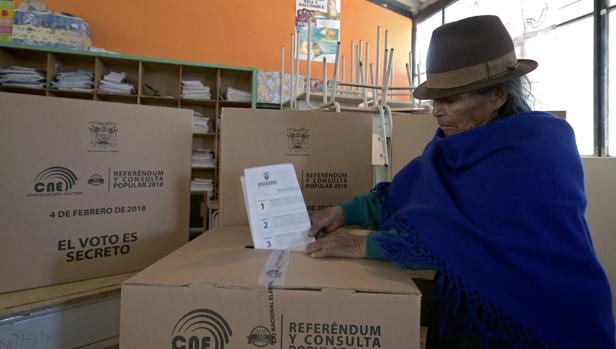President Lasso must decide if he will promote a popular consultation, as he had announced, or if he will continue with the project, with changes, before the Assembly.
Timing is a crucial factor, as tax reforms need to be approved by December to be effective in the next fiscal year.
The Assembly’s response to the return of the Creation of Opportunities Law has been tepid. At the moment, there is no clear position on what the next step for the President regarding his most important proposal will be, which includes a large part of his campaign promises and on which a large part of his economic plan depends.
President Guillermo Lasso has said, that he will appeal to all legal and constitutional provisions “to make prevail” the government’s legal proposal.
Meanwhile, the Secretary of Communication, Eduardo Bonilla, said that they are still evaluating the next step and that, as of last week, they had not been notified.
The Legislative Administration Council’s (CAL) resolution not to qualify the proposal not only closes the door to its processing in the Assembly, but also blocks two other ways out that the “mega-law” could have: its passage through the Ministry of the Law, or its direct approval by referendum.
The second option is truncated because the law says that the President of the Republic may call a popular consultation when the Assembly “denies” a Law.
In this case, the CAL did not deny it, but did not rate it. But even so, the Executive has two options to carry it out. And the decision must be made quickly, as the tax reforms should be approved by December so they can take effect in the next fiscal year. A delay would leave the changes in collection until 2022.
The first option: lower is head before the Assembly The first way out for the ‘mega-law’ is precisely that it stops being that: dividing the proposal into different parts and sending them to the Assembly as different projects. This is precisely the suggestion that CAL made to the Presidency.
According to its analysis, the only issues that would enter into the project classified as ‘urgent economic’ are tax reforms and those related to the financial issues. This would include special contributions for the post-Covid-19 reactivation and the single tax regime for regularization of assets abroad. In addition, it would include the changes in the laws of Mining, Telecommunications, Hydrocarbons, the Production Code, the Coplafip and the Monetary Code, among others.
All these proposals and reforms could enter as an urgent economic project. And the labor part of the initiative, along with changes to other laws, would have to be left for one or more different projects. If the proposal no longer includes economic matters, it cannot be urgent.
However, even if the ‘mega-law’ is divided, this would only guarantee its qualification and the beginning of the process within the Assembly. Already in the commissions, the text of the Executive may receive important changes. Then, a new struggle could be opened between both powers of the State with the vetoes and the ratifications.
The second option: the popular consultation. The Democracy Code provides that the President of the Republic may call a popular consultation “on a bill that has been denied by the National Assembly.”
The problem with the Law for the Creation of Opportunities is that it was not denied by the Assembly but was considered inadmissible by the Council of Legislative Administration (CAL).
Even so, President Lasso has the option of calling a popular consultation, since the Constitution gives him the power to do so “on matters he deems appropriate.” In previous governments, this mechanism has already been used to make legal reforms or issue new laws.
But in the consultation, you must also separate the topics since each question must have a subject. It is not possible to ask a single question on all the subjects of the ‘mega-law.’
The campaign and the result will also depend on its wording.
A consultation, however, has two negative aspects for the government: cost and time. According to data from the CNE, the 2018 popular consultation cost around $40 million. The times are not favorable either, especially due to the urgency of the tax reform. The process of a popular consultation could take about three months, according to the legal deadlines, which are not enough for the new taxes to take effect in 2022.
A radical solution
A third option appears on the radar of social networks, and has been mentioned by the President of the Assembly, Guadalupe Llori, and the members of Pachakutik and UNES on several occasions: the ‘Death Cross.’
The Executive has not mentioned this option on any occasion. However, Llori spoke of this “threat” last week before CAL made the decision on the Economic Growth Law.
The Constitution provides that the President may dissolve the Assembly when, “repeatedly and unjustifiably obstructs the execution of the National Development Plan.”
In this case, the National Electoral Council has seven days to call new presidential and legislative elections. In other words, if Lasso dissolves the Assembly, he will have to, if applicable, stand for election again. ‘Death Cross’ is a constitutional mechanism that has never been used. In the government of Rafael Correa there were several threats, but they never materialized.


0 Comments